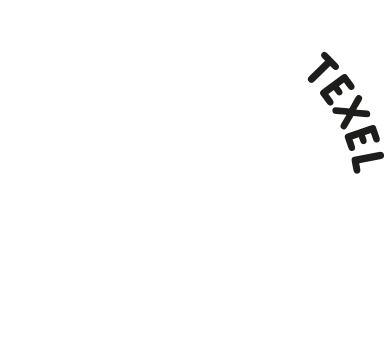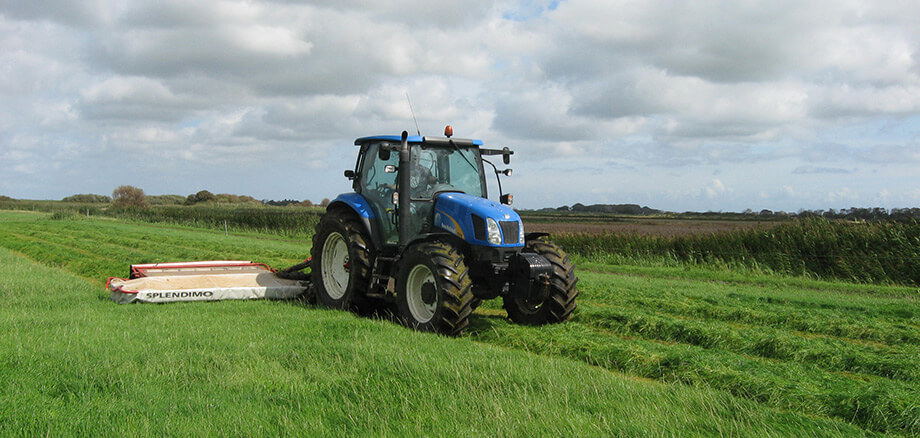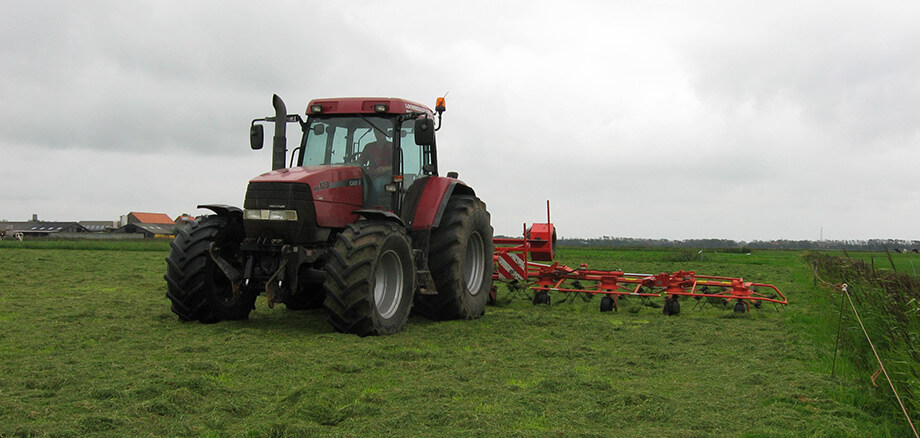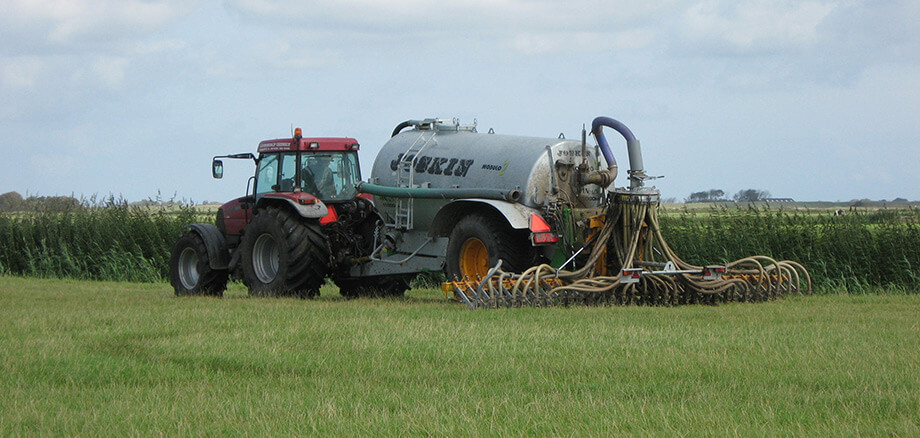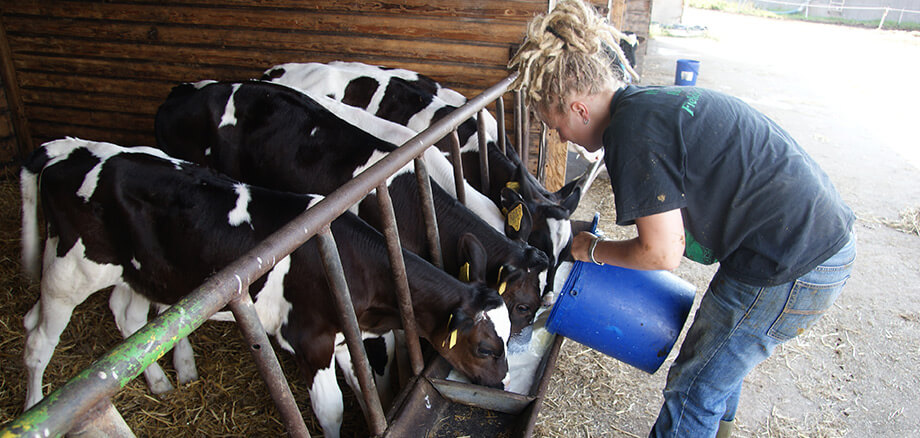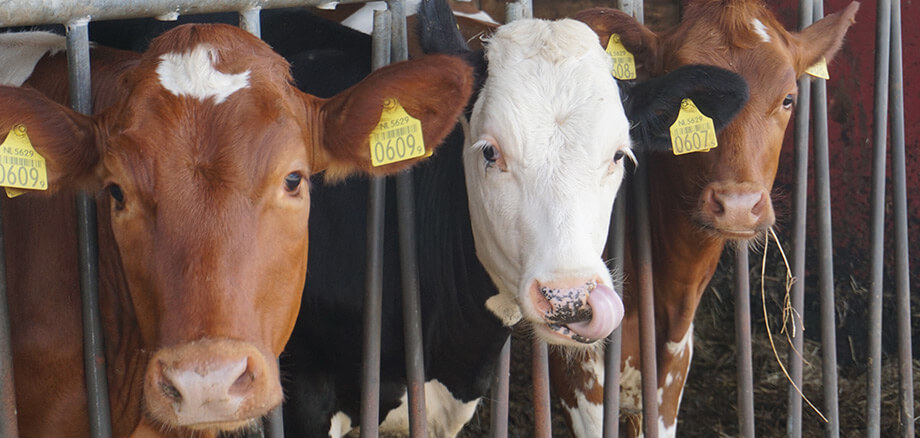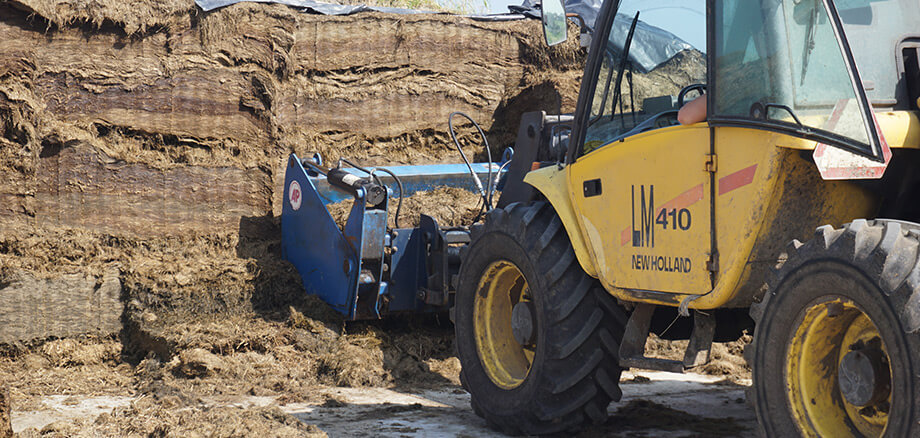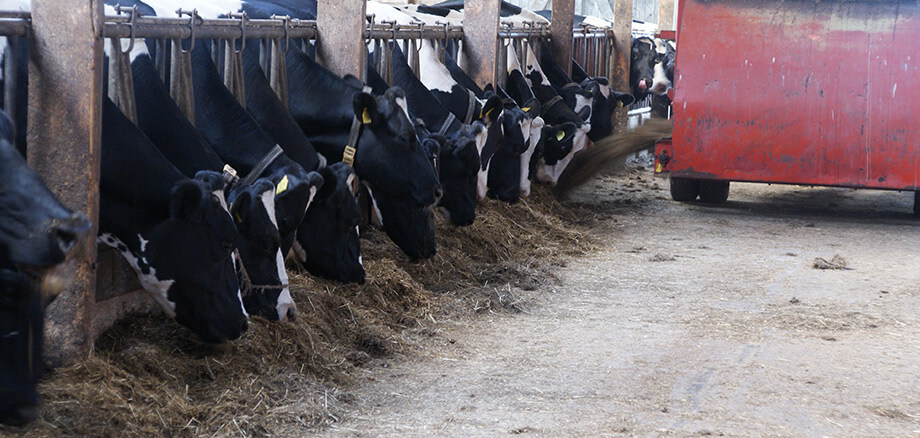Operations
The cows
The Rikkenberg Dairy Farm has 260 cows – 175 dairy cows and 85 calves – divided over 3 barns. The youngest animals live with Corine at the Grietjeshoeve, in straw-bedded pens and on grid floors. The older calves and dairy cows live with Evert, at Molenzicht.
Whether the ladies are inside or outside, they mostly eat of our own land. During the grazing season, the cows get their grass fresh from the pasture; in the indoors season, the ladies are fed from the winter stock that was built up over summer. The winter menu offers silage, hay and minerals. The children’s menu contains calf milk, muesli and hay.
During the grazing season, the dairy cows go outside. They’re free to move between shed and pasture. The first time they leave the stable during the grazing season, there’s a lot of skipping and dancing. Check out a YouTube video to see for yourself what graceful ballerina’s cows can be!
The cows at Rikkenberg dairy farm are mostly a cross between two breeds: Holstein and Fleckvieh. Originally, Holsteins are an American breed, the cows with black and white spots we all know. Fleckvieh cows have a typical, often white head. They’re sturdy ladies with a distinct character. The Rikkenberg herd consists of strong animals with a dual purpose: milk and beef. Very sustainable ladies, in other words.
The milking
The dairy cows are milked twice a day. At 5.30 am and at 4 pm. An early morning, but that’s no problem for a true farmer. Or for the cows, for that matter. The ladies only sleep 30 minutes a night. Evert and Corine work in the milking parlour, while Dirk takes care of the cows’ cubicles and supplies the animals with fresh feed. After the milking, the milking parlour is cleaned and any recently calved cows are milked separately. During the opening hours of the shop, you’re welcome to come and have a look at the milking!
The land
Rikkenberg dairy farm has about 100 hectares of land. Just to give you an idea: 100 hectares are equal to about 150 football pitches. So the ladies have plenty of room to stretch their legs during grazing season. It’s also enough pasture to build up a delicious winter stock of silage.
Contract workers are used to harvest the grass. The contract worker mows the grass and takes it to the pit (which isn’t actually a pit, surprisingly enough, but more of a heap). The shaking (to dry the grass) and raking is done by the farmers themselves. At the end of the day, everybody helps to pack the pit in plastic sheets and cover it with a layer of sand. That way, the silage stays fresh throughout the winter season. After the grass has been stored, a new cycle of fertilizer, sun and rain starts, until a new ‘cut’ is ready to be mowed.
Having grown up among the birds in and around De Waal, Dirk is the right man to mark the nests of farmland birds before mowing. He spots all the nests, so people can mow around them.
Share this on FACEBOOK
